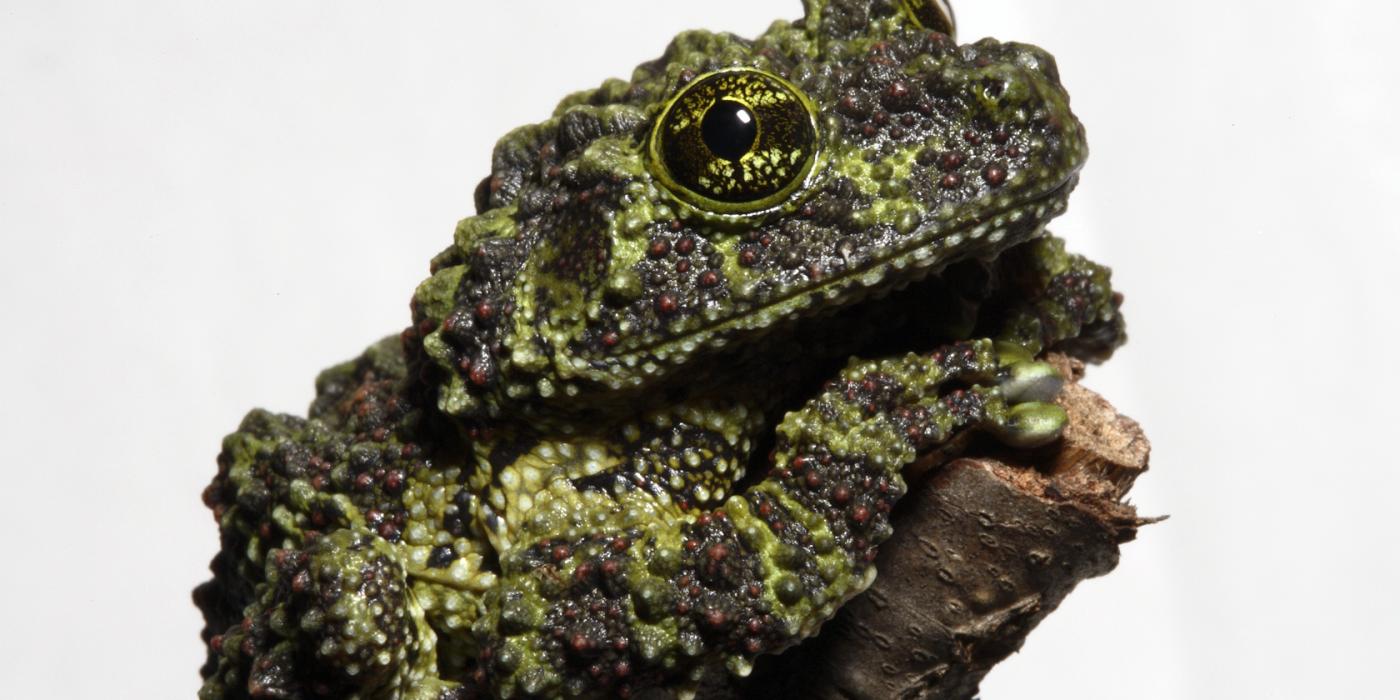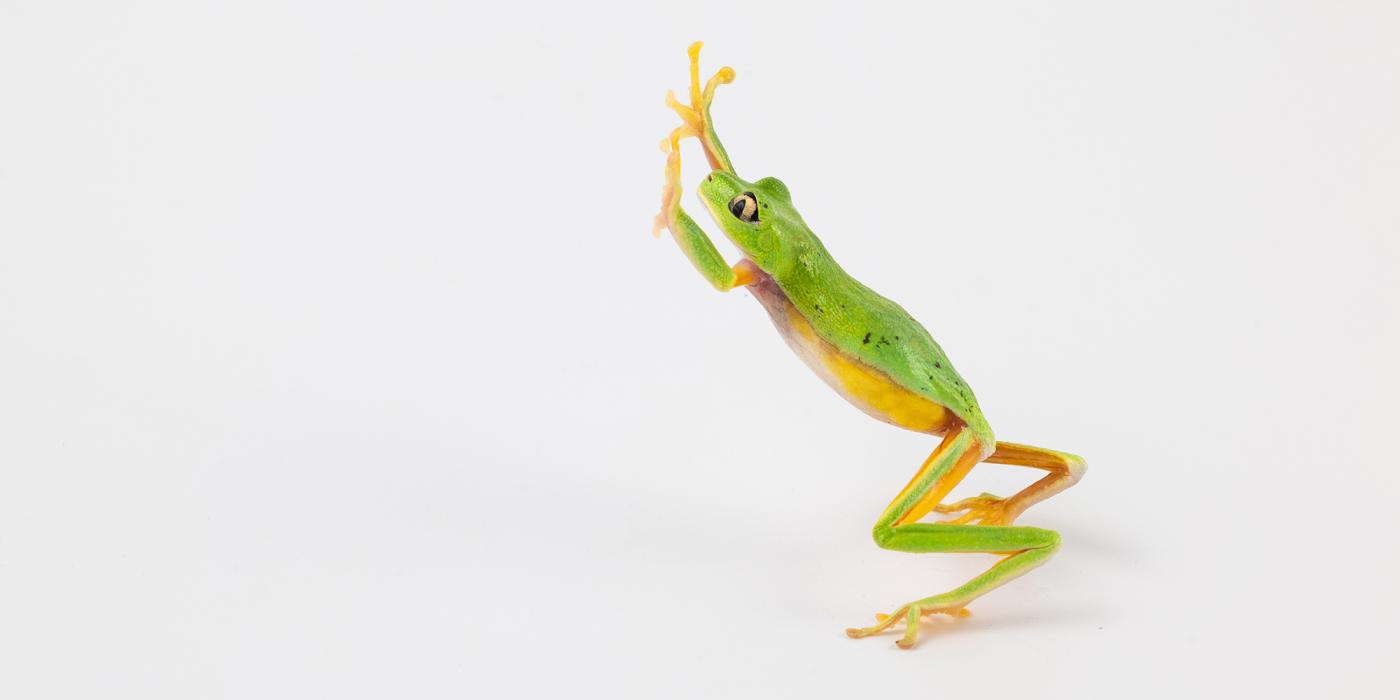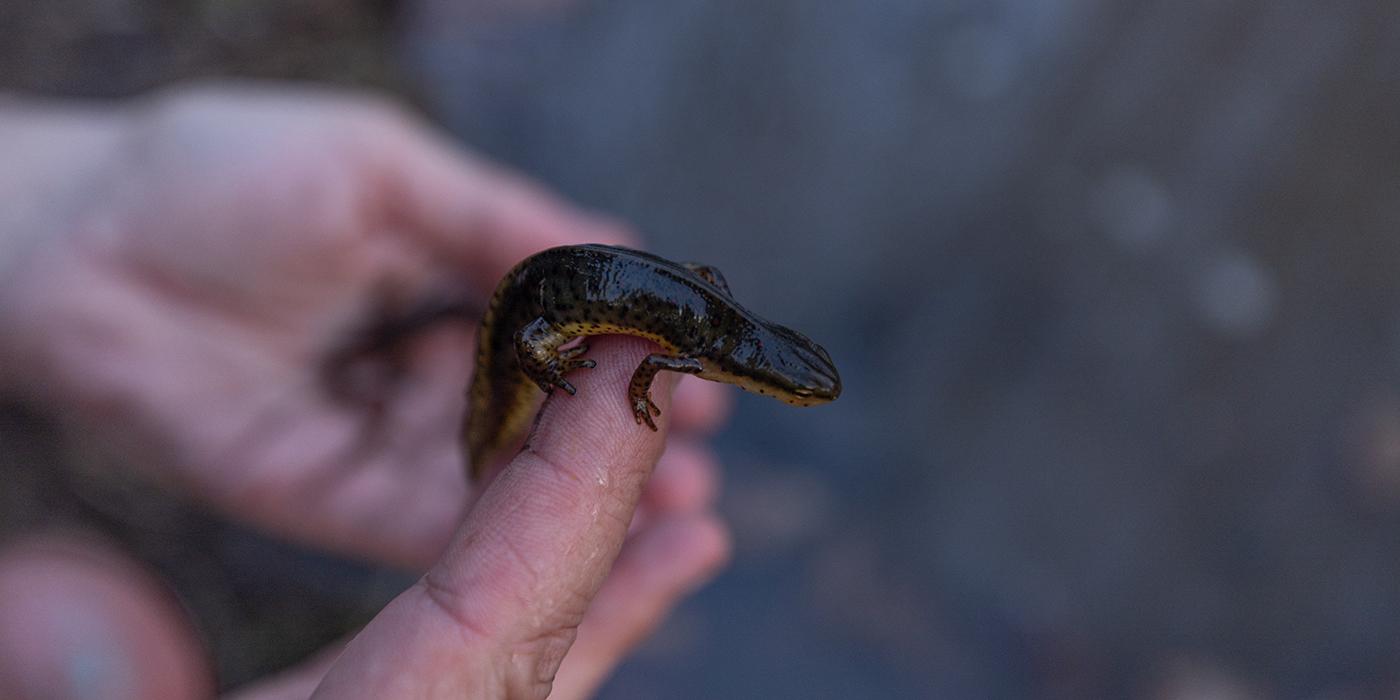Meet Mossy Frogs, Masters of Camouflage
Meet the cutest clump of “moss” you ever did see: the Vietnamese mossy frog! In spring, the Reptile Discovery Center team celebrated the arrival of 50 hatchlings. Learn what it takes to set the mood for mossy frog mating from assistant curator Matt Evans.
What do you enjoy most about working with mossy frogs?
Asian amphibians are less common in North American zoos than their New World counterparts, such as lemur leaf frogs and poison dart frogs. Visitors aren’t as familiar with Vietnamese mossy frogs, so that alone gives them a certain “wow” factor for our guests. As someone who works with them daily, what stands out for me is how different this species is from the other frogs in our collection.
For example, lots of frogs have cool adaptations, but I’ve never seen a frog whose eyes blends into its skin the way a mossy frog’s do. They are truly masters of camouflage! Looking at them from a distance, it’s very difficult to distinguish them from a clump of moss. It’s absolutely awe-inspiring.
And, their defense mechanism is very unique. When they are nervous or frightened, they will curl up into a ball and plop into the water below to escape from harm’s way.
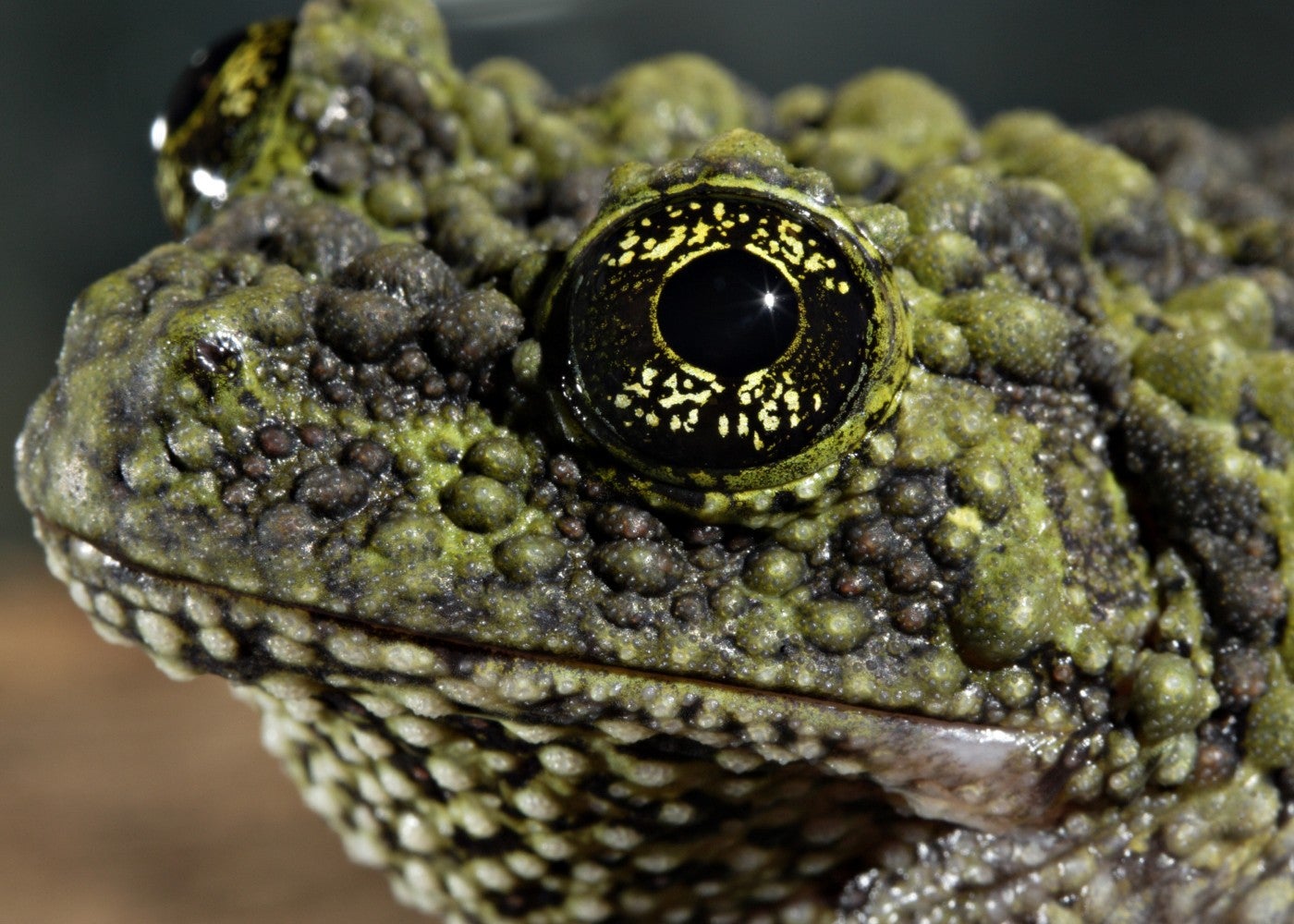
How do you tell males and females apart?
In general, females are bigger and bulkier that the males. But not always. The telltale sign occurs during breeding season, when males develop a thickening “nuptial pad” on the inside of their thumbs. Only males have this trait, as it helps them to hold onto females during breeding. When it is not mating season, the color of this pad changes to a slightly darker hue.
How do keepers “set the mood” for breeding?
In the wild, Vietnamese mossy frogs spend a lot of time in and around limestone caves, clinging to the walls. Typically, these caves contain streams with rocky riverbeds, and we mimic that semi-aquatic environment here at the Zoo. Breeding typically takes place during the wet season which, for us, is spring. It is triggered by storms, which bring fluctuations in temperature, humidity and atmospheric pressure. We keep an eye on the weather outside and mimic these conditions in their habitat with special lighting and misters.
When the frogs pick up on these changes, males make their way down from their perching to the water, where they call to get the females’ attention. Once the females arrive, the males embrace them from behind, a behavior called amplexus. Mating is a brief affair.
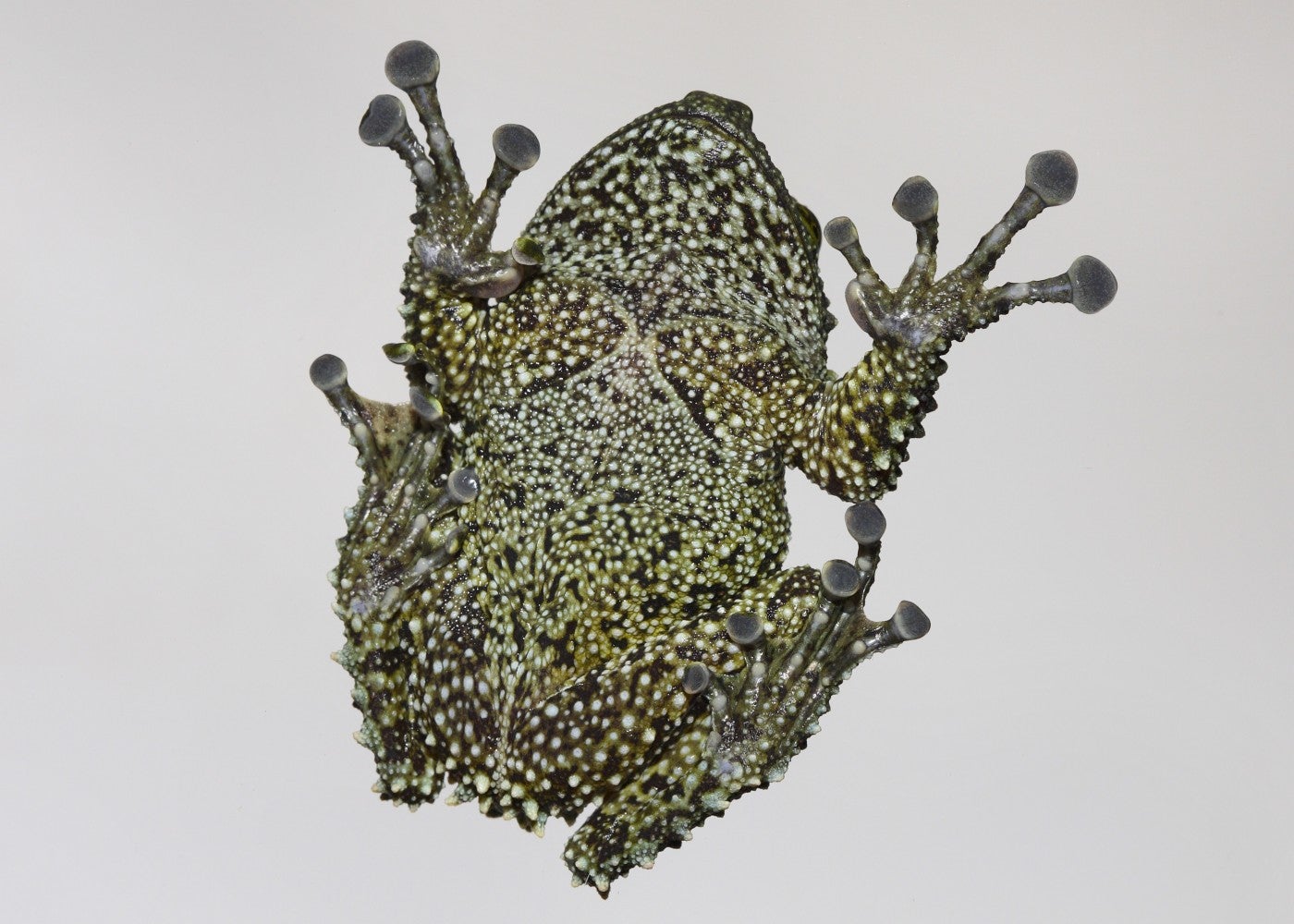
Where does mom lay her eggs?
Females lay eggs one at a time. They have a jelly-like coating that causes them to stick to surfaces. Our females seem to prefer to lay their eggs on PVC tubes, cork bark or rocks just a couple inches above the water’s surface. That way, when the tadpoles hatch, they’ll fall right in. Once she’s laid her eggs, the mother’s work is done.
How do they grow and develop?
About two weeks after a mother mossy frog lays her eggs, the tadpoles hatch out. Initially, they are very dark in color. As they sprout limbs and grow into froglets, however, they start to develop their color. When they emerge from the water as fully formed froglets—around 3 months of age—they look like miniature versions of the adults, but bright red and green. As they age, these colors dull, and the red changes to maroon and brown, perfectly mimicking moss!
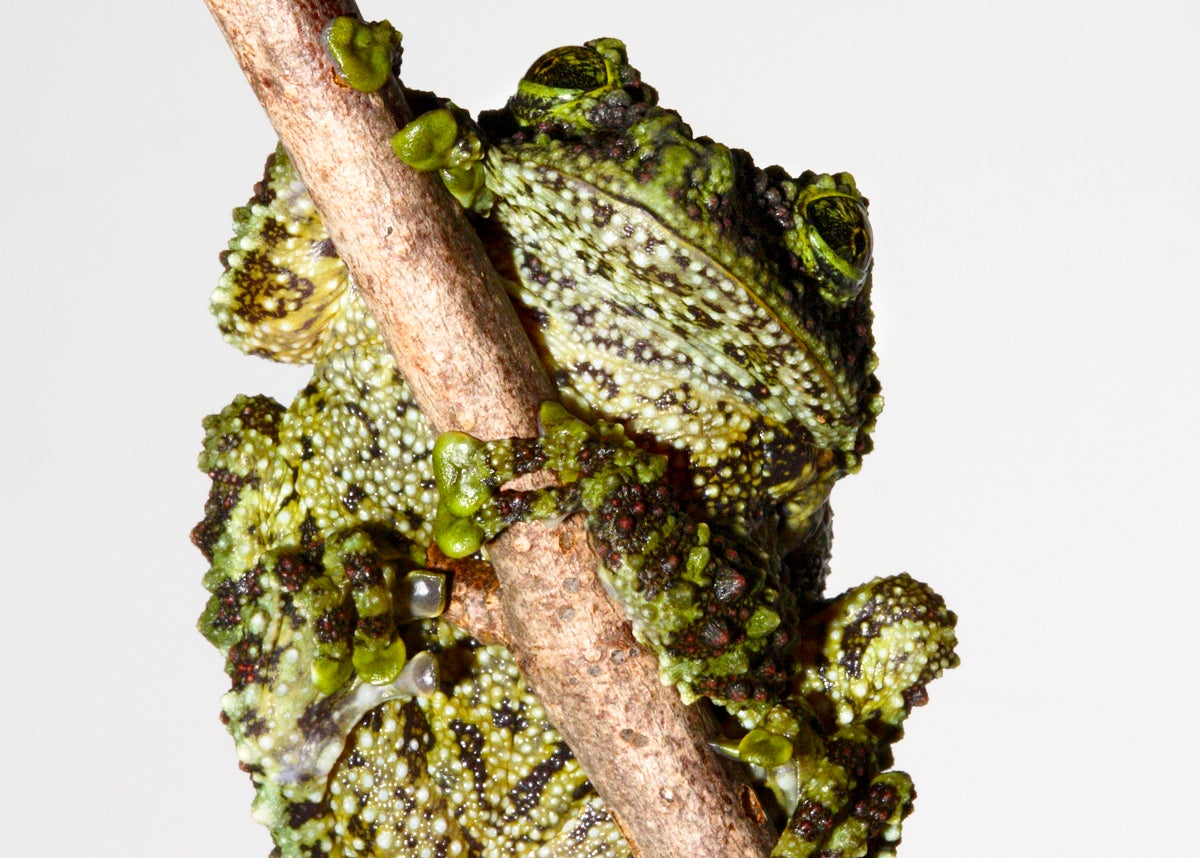
What do mossy frog tadpoles eat?
Most tadpoles are foragers—they eat anything and everything. In the wild, mossy frog tadpoles prey on aquatic invertebrates and other smaller tadpoles. Here at the Zoo, their diet is protein-based, small invertebrates and aquatic fish food.
What do froglets eat?
Amphibians’ instinct to hunt is triggered by the movement of their prey. Although a mother mossy frog may weigh 40 to 50 grams, a newly-formed froglet may only weigh a gram or two! Small frogs need even smaller food. We feed our froglets live crickets that are tiny—about the size of a pinhead. To hunt, they leap on top of their prey, grab it and shove it into their mouth. It’s not the most graceful behavior, but it’s fun to watch!
As the frogs grow, the prey they receive increases in size, too. Zoo visitors might not realize that Reptile Discovery Center keepers don’t only take care of the animals in our collection. We also have to feed and care for their food, too!
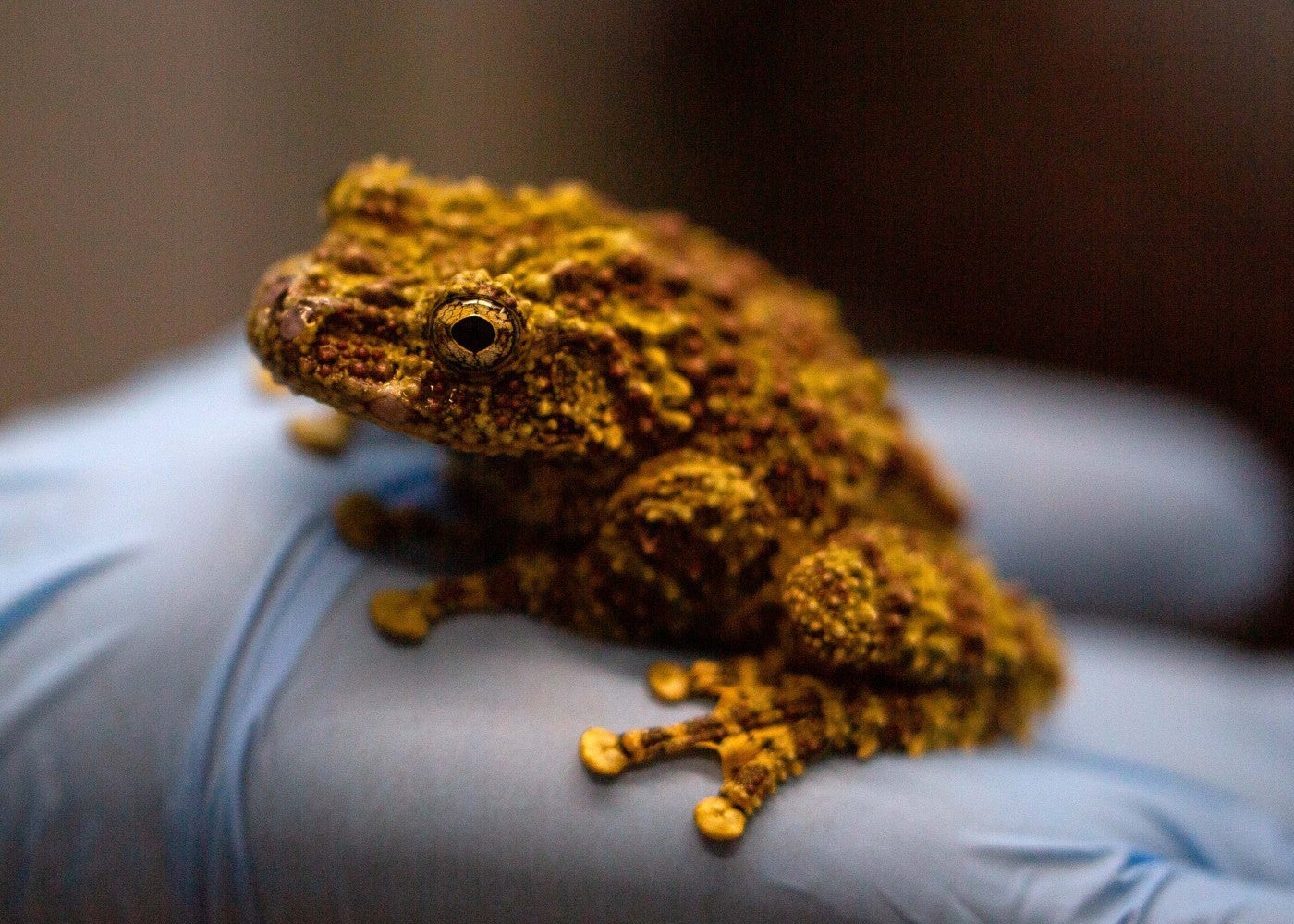
Got any tips for spotting the frogs that are on exhibit?
Mossy frogs hide in plain sight and gravitate toward areas where they blend into the environment. They tend to be most active right when we open and close the building. One of our exhibit frog’s favorite hangout spots is on the back wall of the exhibit, which is covered in faux rockwork. You have to look very closely to distinguish the frog from its habitat! I always enjoy watching visitors’ faces light up when they finally spot it.

I want to help frogs! What can I do?
Protecting amphibians means protecting water—especially the creeks and streams in our own neighborhoods and backyards.
These animals live part of their lives on water and part of their lives on land. For many species, their livelihood is tied to temporary wetlands, which are wet during fall, winter and spring but dry up in summer. This habitat is critically important to the frogs, tadpoles and salamanders that call it home.
When you fertilize your lawn in the spring and summer, or use ice melt on your sidewalks and driveway in the winter, not all of those chemicals get absorbed into the ground. A good portion of them runoff into the very wetlands where amphibians live, which negatively affects the quality of the water.
Frogs thrive in areas where the water is pristine. Where water quality is poor, frogs could potentially get sick or die. It can also affect their ability to breed successfully. We want to keep these animals alive in the wild, so keep the frogs in mind as your make choices about your home and lawn care.
This article appears in the May 2022 issue of National Zoo News. Want to learn more fun facts about frogs? Hop on over to our Amphibian Awareness Week page to learn more about our amazing animal ambassadors and their conservation.
Related Species:

